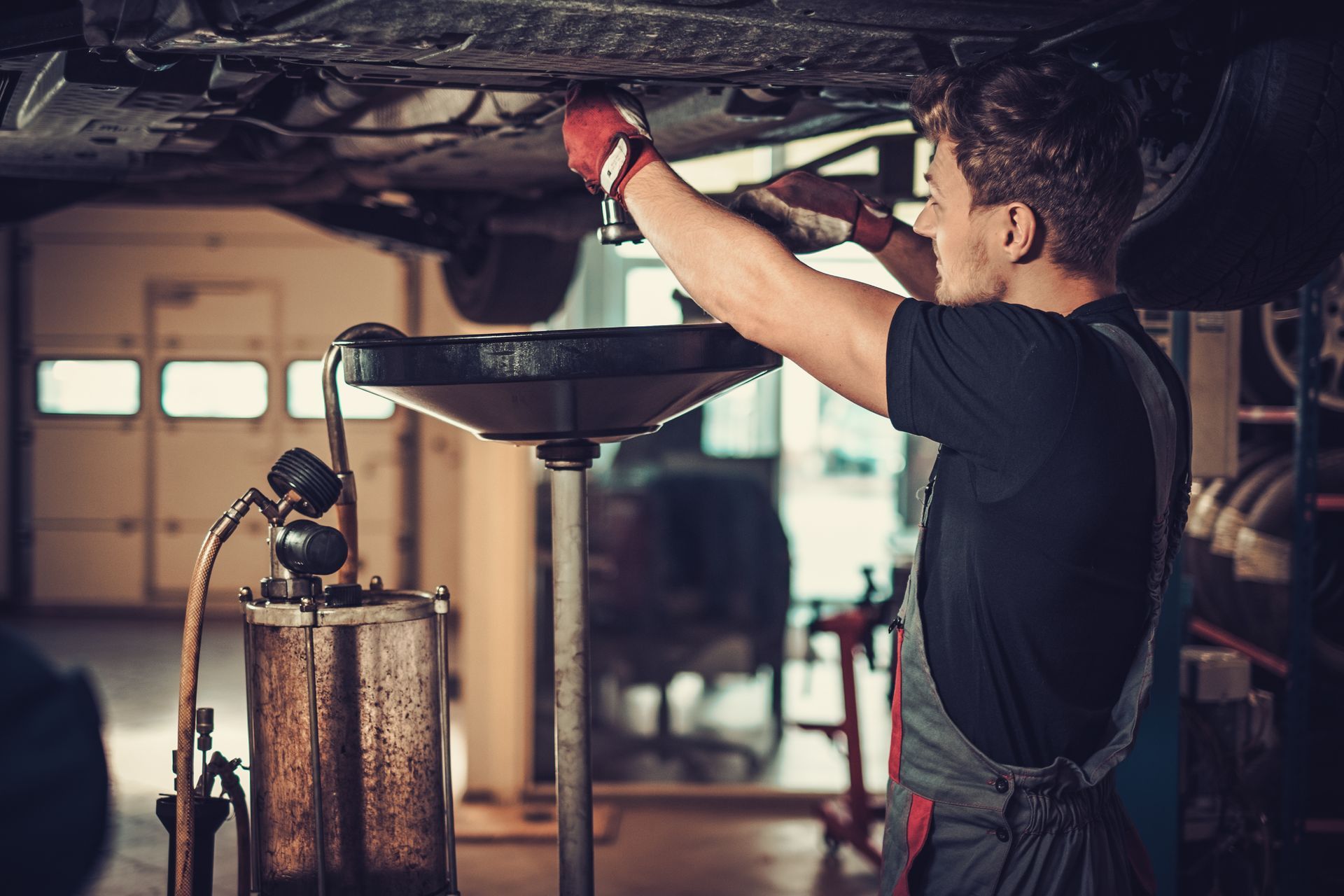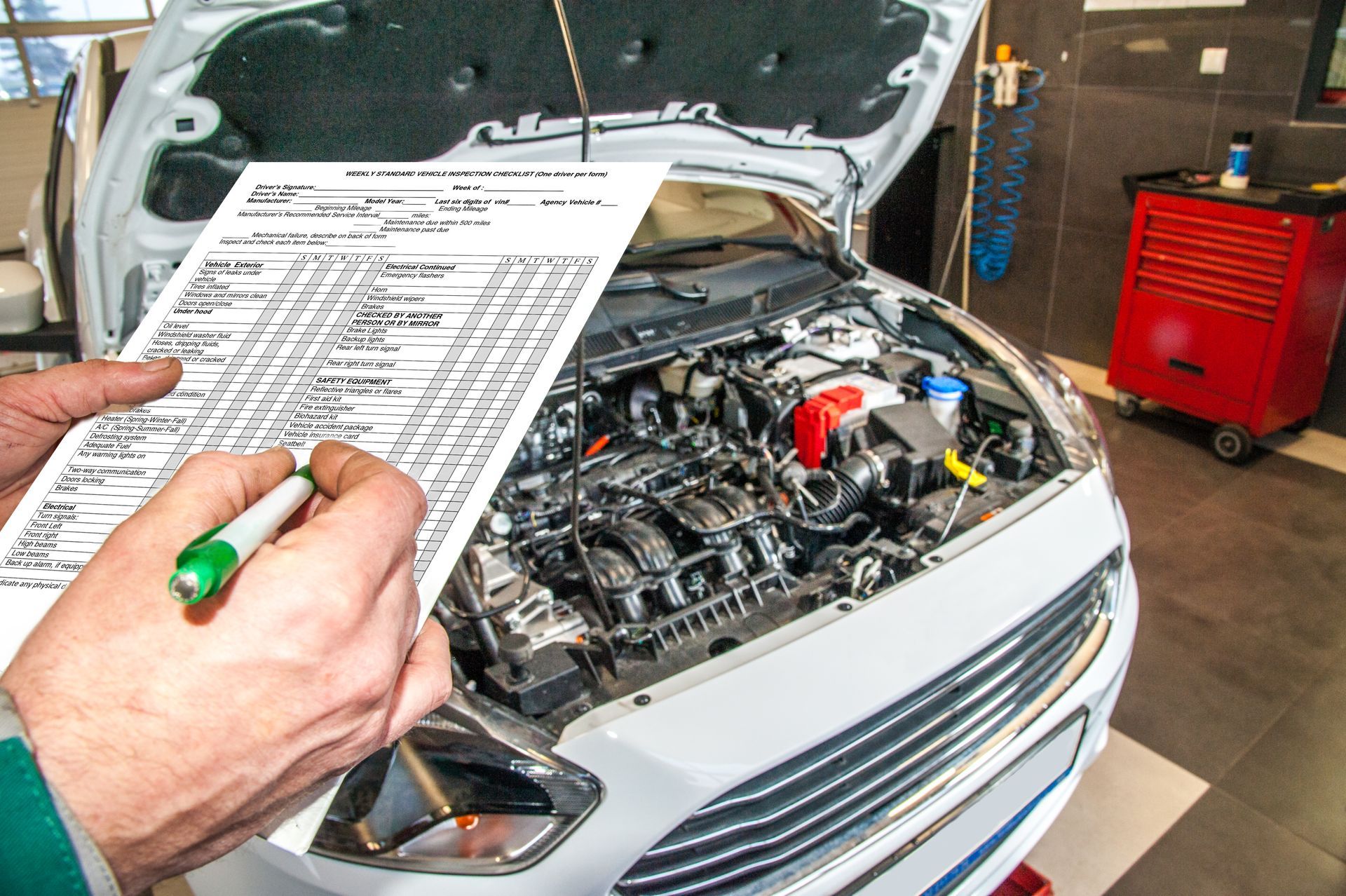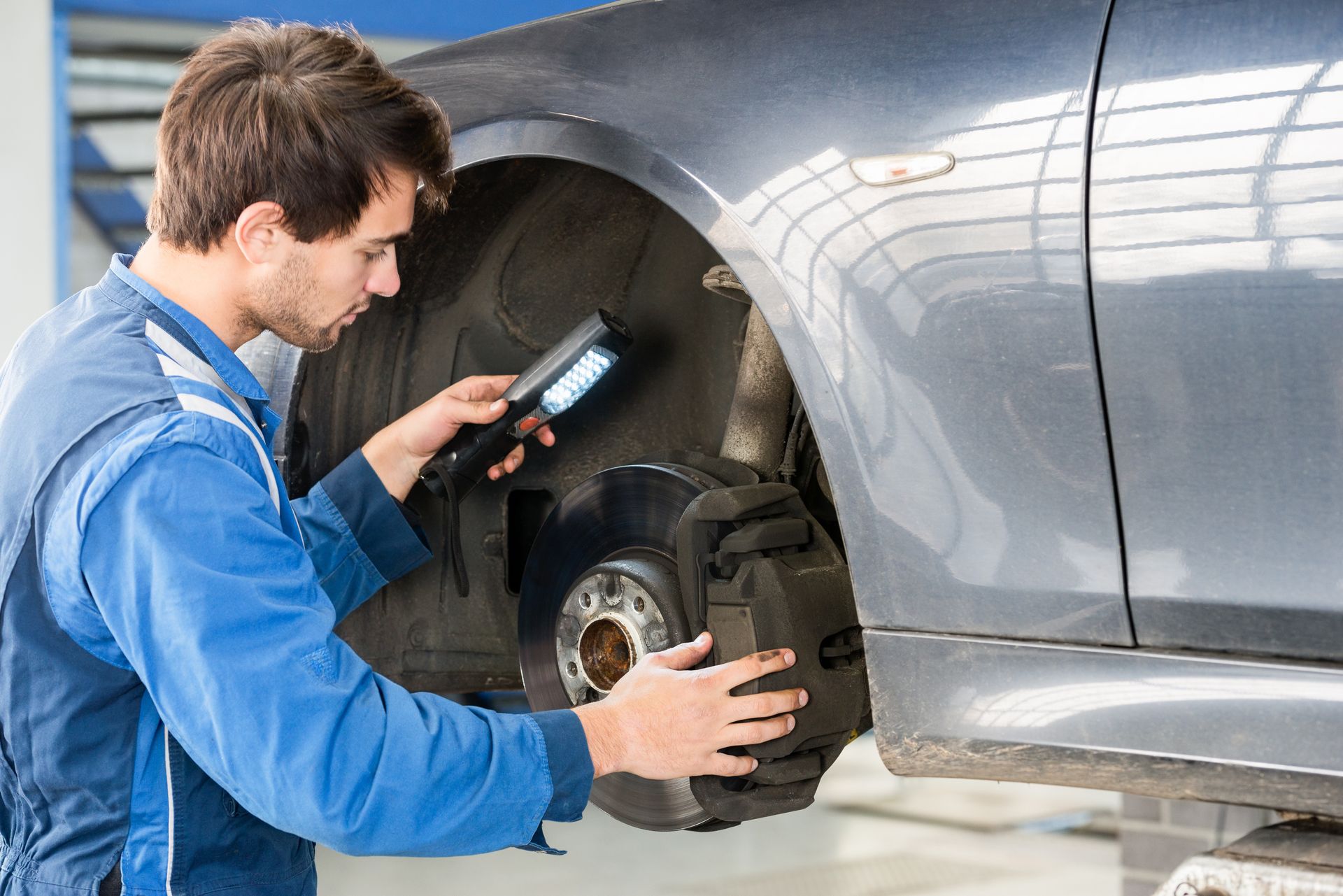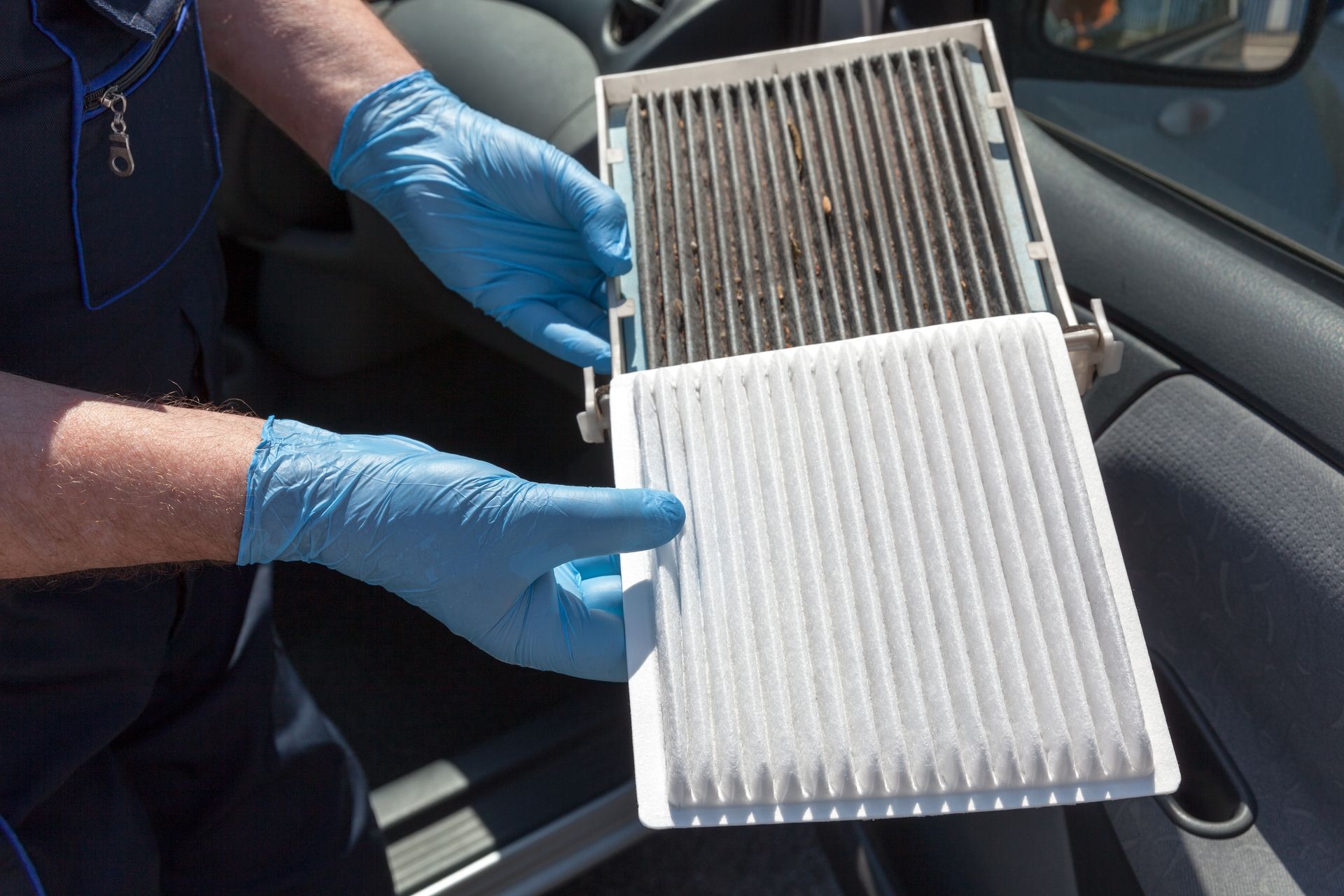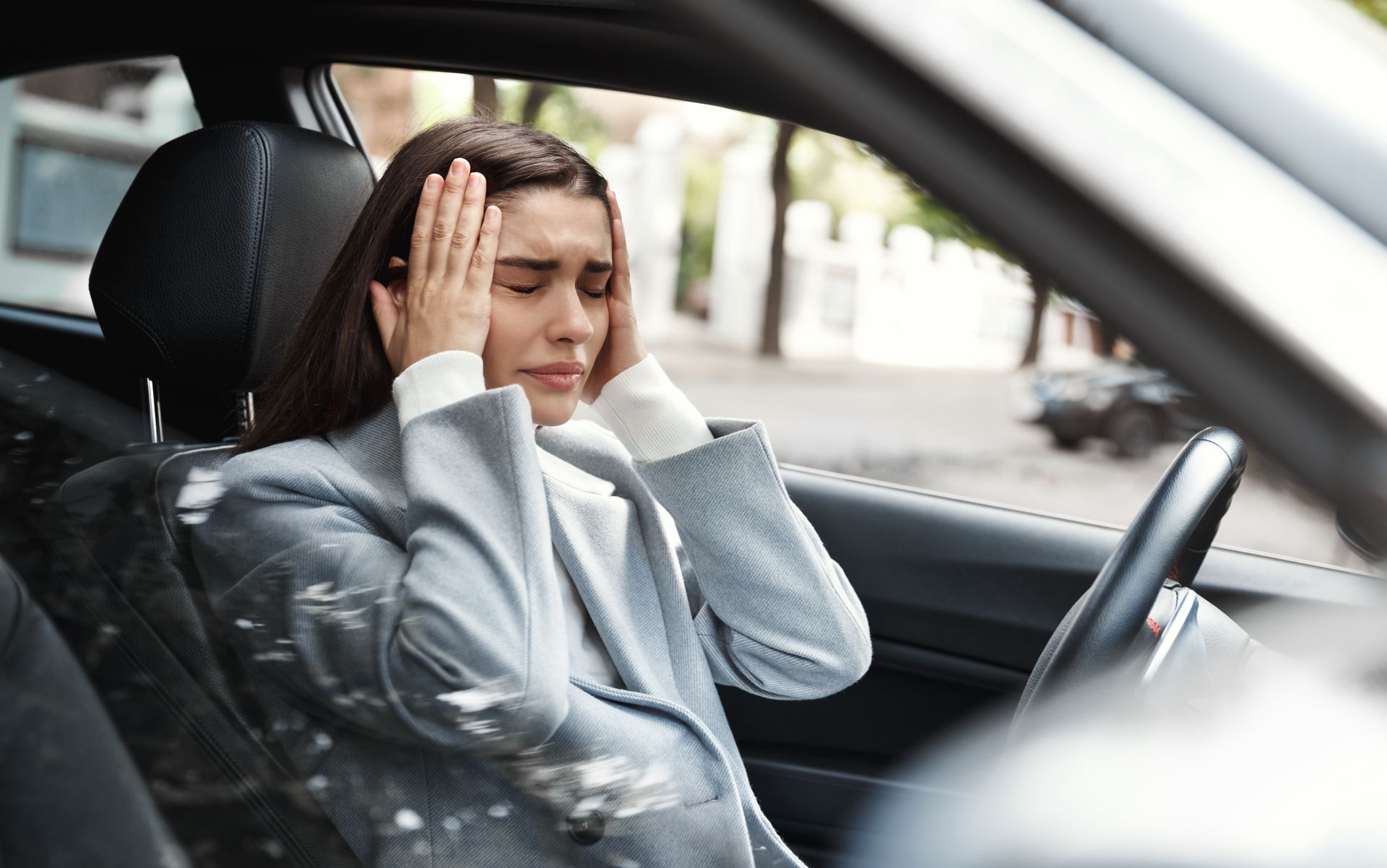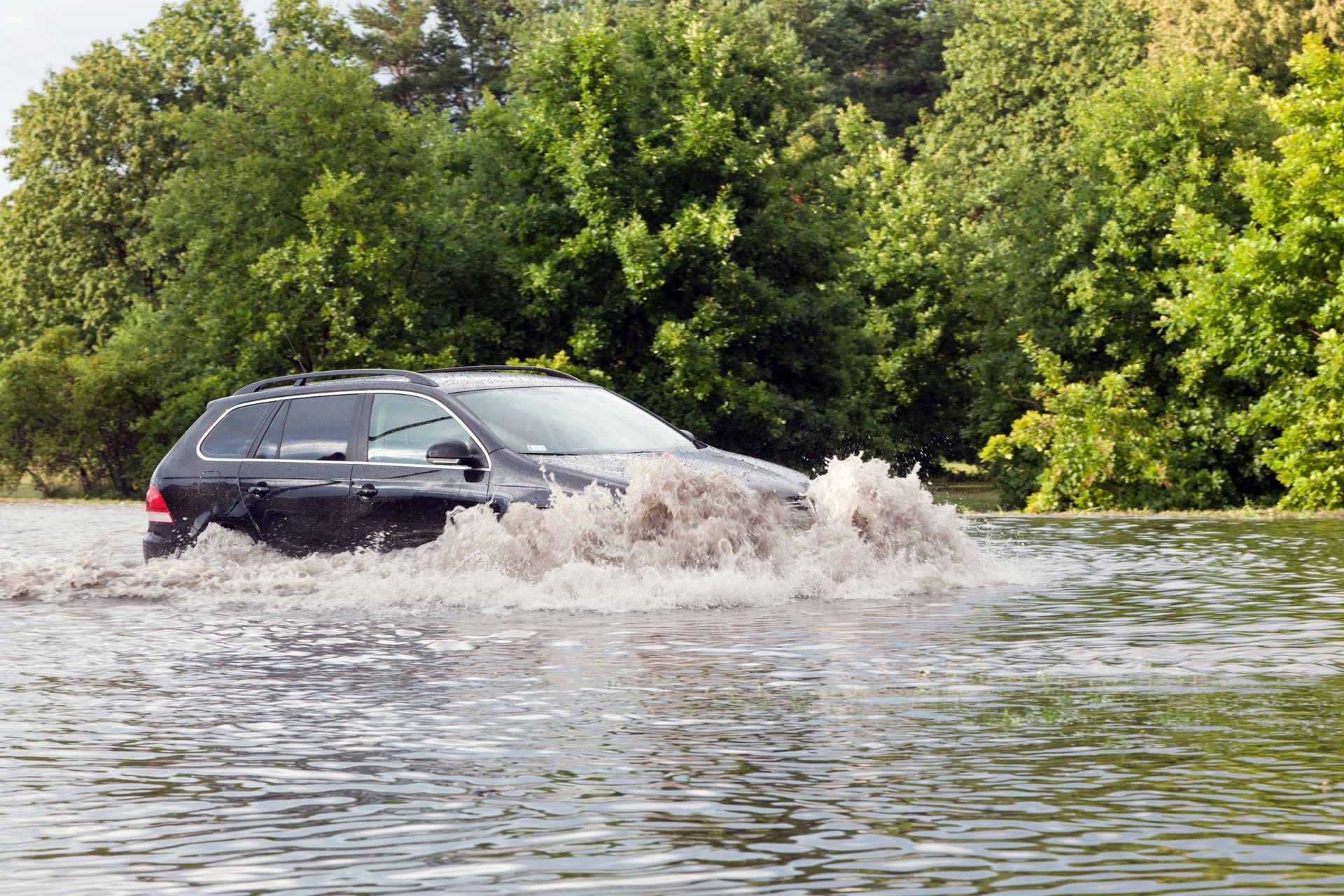Brakes rarely go from fine to failing overnight. They leave clues first, and catching those clues early keeps stops short, pedal feels firm, and repair costs are reasonable. Here are the warning signs our technicians want you to watch for, what they usually mean, and the smart next steps to keep your braking system safe.
1. Squealing or Grinding That Sticks Around
A light squeal on a damp morning can be surface rust and may clear after a few stops. A steady, high-pitched squeal during normal driving is different. That sound often comes from a small wear indicator tab touching the rotor, which means the pad material is getting thin.
If the noise turns into a coarse grind, the pad’s metal backing may be contacting the rotor. Driving in that condition chews deep grooves, overheats the caliper, and can push a simple pad service into pads, rotors, and hardware. If the squeal does not fade, plan a visit.
2. Pulsation in the Pedal or a Shaking Steering Wheel
If the pedal pulses at highway speeds or the steering wheel shimmies during light to moderate stops, the rotors may have uneven thickness. Heat from repeated hard stops, stuck slide pins, or uneven pad transfer can create high and low spots around the rotor face. You feel those spots as a rhythm in the pedal.
A proper inspection measures rotor thickness and runout to decide whether machining is safe or replacement is smarter. Restoring a smooth surface lets the pads make full, even contact and brings back confident, straight stops.
3. A Soft, Low, or Slowly Sinking Pedal
A firm pedal that sits high inspires trust. If your pedal travels farther than usual, feels spongy, or sinks slowly at a long light, the system needs attention now. Common causes include air in the lines, moisture contaminated fluid, worn pads with caliper pistons extended, or an internal master cylinder issue. Brake fluid absorbs moisture over time, which lowers its boiling point and encourages corrosion inside calipers and ABS valves.
A complete fluid exchange, paired with an inspection of hoses, calipers, and the master cylinder, often restores a solid, predictable pedal.
4. Pulling to One Side or a Hot, Acrid Smell After Short Drives
A car that veers left or right when you brake usually has an imbalance. One side may be doing more work because a caliper piston is sticking, slide pins are dry, or a hose has collapsed internally. Another possibility is a pad contaminated by grease or gear oil, which lowers friction on that corner and pulls the car in the opposite direction. Heat is a useful clue.
If you smell hot brakes after a short drive, or one wheel collects much more brake dust than the others, friction is happening when it should not. That extra heat can glaze pads, discolor rotors, and shorten wheel bearing life if it is ignored.
5. Warning Lights, ABS Faults, or Parking Brake Problems
Modern systems do not rely on feeling alone. A red brake warning can indicate the parking brake is engaged, the fluid is low, or there is a hydraulic issue. An amber ABS light means the anti-lock system has a fault, so wheels can lock on slick roads even if basic braking still works.
If the parking brake will not hold on a hill or releases unevenly, cables or electronic actuators may be binding. These alerts deserve a quick scan and a road test so small faults do not turn into larger repairs.
Simple Checks You Can Do Before You Visit
You can gather helpful clues without tools. With the car parked, look through the wheel spokes and find the pad where it meets the rotor. If you see only a slim sliver of lining, service is due. Peek at the fluid level in the reservoir. A slow, gradual drop can follow normal pad wear, while a sudden change suggests a leak.
During a short drive, note whether a noise changes when you lightly rest your foot on the pedal. These details help the technician go straight to the problem.
What Professional Brake Service Includes
A thorough visit starts with a road test to feel pulsation, pull, or noise. With the wheels off, we measure pad thickness, rotor runout, and rotor thickness variation. Caliper slides are cleaned and lubricated, hardware is replaced where needed, and hoses are checked for cracks or swelling.
If fluid is dark, a complete exchange protects internal parts and returns a firm pedal feel. After reassembly, we bed the pads properly so the first stop after service feels smooth and the system stays quiet.
Keep Stops Safe with Layton’s Garage in Fort Lauderdale, FL
If you hear a squeal, feel a pulse, notice a softer pedal, or see a warning light, we are ready to help. Our technicians will test drive with you, measure components, service pads and rotors, refresh fluid, and correct the cause so braking stays quiet and consistent.
Schedule a visit with
Layton’s Garage in Fort Lauderdale, FL, and drive away with straight, confident stops and peace of mind in every mile.



